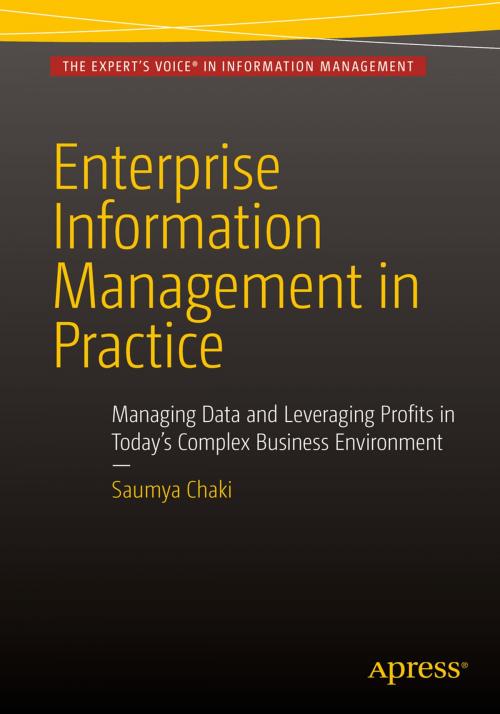Enterprise Information Management in Practice
Managing Data and Leveraging Profits in Today's Complex Business Environment
Nonfiction, Computers, Database Management, Data Processing, General Computing| Author: | Saumya Chaki | ISBN: | 9781484212189 |
| Publisher: | Apress | Publication: | December 19, 2015 |
| Imprint: | Apress | Language: | English |
| Author: | Saumya Chaki |
| ISBN: | 9781484212189 |
| Publisher: | Apress |
| Publication: | December 19, 2015 |
| Imprint: | Apress |
| Language: | English |
Learn how to form and execute an enterprise information strategy: topics include data governance strategy, data architecture strategy, information security strategy, big data strategy, and cloud strategy. Manage information like a pro, to achieve much better financial results for the enterprise, more efficient processes, and multiple advantages over competitors.
As you’ll discover in Enterprise Information Management in Practice, EIM deals with both structured data (e.g. sales data and customer data) as well as unstructured data (like customer satisfaction forms, emails, documents, social network sentiments, and so forth). With the deluge of information that enterprises face given their global operations and complex business models, as well as the advent of big data technology, it is not surprising that making sense of the large piles of data is of paramount importance. Enterprises must therefore put much greater emphasis on managing and monetizing both structured and unstructured data.
As Saumya Chaki—an information management expert and consultant with IBM—explains in Enterprise Information Management in Practice, it is now more important than ever before to have an enterprise information strategy that covers the entire life cycle of information and its consumption while providing security controls.
With Fortune 100 consultant Saumya Chaki as your guide, Enterprise Information Management in Practice covers each of these and the other pillars of EIM in depth, which provide readers with a comprehensive view of the building blocks for EIM.
Enterprises today deal with complex business environments where information demands take place in real time, are complex, and often serve as the differentiator among competitors. The effective management of information is thus crucial in managing enterprises. EIM has evolved as a specialized discipline in the business intelligence and enterprise data warehousing space to address the complex needs of information processing and delivery—and to ensure the enterprise is making the most of its information assets.
Learn how to form and execute an enterprise information strategy: topics include data governance strategy, data architecture strategy, information security strategy, big data strategy, and cloud strategy. Manage information like a pro, to achieve much better financial results for the enterprise, more efficient processes, and multiple advantages over competitors.
As you’ll discover in Enterprise Information Management in Practice, EIM deals with both structured data (e.g. sales data and customer data) as well as unstructured data (like customer satisfaction forms, emails, documents, social network sentiments, and so forth). With the deluge of information that enterprises face given their global operations and complex business models, as well as the advent of big data technology, it is not surprising that making sense of the large piles of data is of paramount importance. Enterprises must therefore put much greater emphasis on managing and monetizing both structured and unstructured data.
As Saumya Chaki—an information management expert and consultant with IBM—explains in Enterprise Information Management in Practice, it is now more important than ever before to have an enterprise information strategy that covers the entire life cycle of information and its consumption while providing security controls.
With Fortune 100 consultant Saumya Chaki as your guide, Enterprise Information Management in Practice covers each of these and the other pillars of EIM in depth, which provide readers with a comprehensive view of the building blocks for EIM.
Enterprises today deal with complex business environments where information demands take place in real time, are complex, and often serve as the differentiator among competitors. The effective management of information is thus crucial in managing enterprises. EIM has evolved as a specialized discipline in the business intelligence and enterprise data warehousing space to address the complex needs of information processing and delivery—and to ensure the enterprise is making the most of its information assets.















